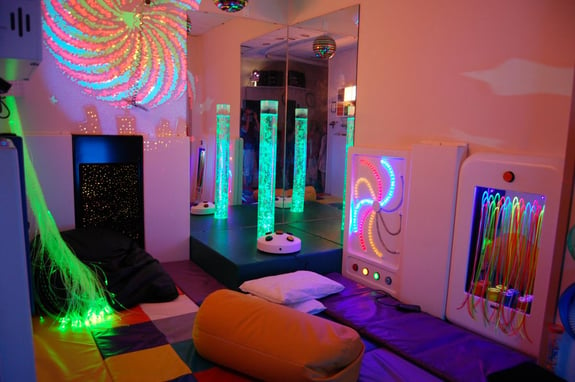
In addition to traditional fitness applications such as training facilities and gymnasiums, a large portion of our custom padding department is dedicated to the production of fully padded rooms for a variety of different uses. While each padded room comes with different application requirements, the majority are used as a safety precaution in hospitals and health facilities or simply for providing relaxation, comfort or to heighten the senses.
As of late, we have been involved in projects aiming to design and build Snoezelen multi-sensory environments for clients around the globe. Here are some of the basics surrounding these popular sensory-focused padded rooms:
What is Snoezelen Multi-Sensory Environment?
This concept was actually designed by a pair of Dutch therapists in the late 1970’s who were working at a local centre for people experiencing intellectual disabilities. These therapists eventually would create an environment for their patients that would excite the senses and prove to be quite beneficial to their early subjects.
These sensory rooms are designed to encourage stimulation and exercise in those with special needs and other challenging conditions, in a safe and monitored environment. These unique environments have been proven to improve perceptual, cognitive and behavioural impairments while encouraging therapy, learning and relaxation for users.
Elements of Snoezelen Multi-Sensory Environments
These padded rooms are often filled with colourful lighting, sound elements and scents aimed at initiating sensual sensations that induce well-being, security and foster a reduction in anxieties. Items typically used in Snoezelens to stimulate visual systems include fiber optics and bubble tubes while matting and padding is used to arouse the tactile system.
Common Uses of Snoezelen Multi-Sensory Environments
- Children with Special Needs
- Mental Health Treatment
- Post Traumatic Stress Disorder (PTSD) Treatment
- Pain Control
- Stroke & Traumatic Brain Injury Treatment
Common Applications of Snoezelen Multi-Sensory Environments
- Schools & Educational Facilities
- Children’s Hospitals
- Autism Programs
- Health Care Facilities
- Long-Term Health Facilities
.png)
